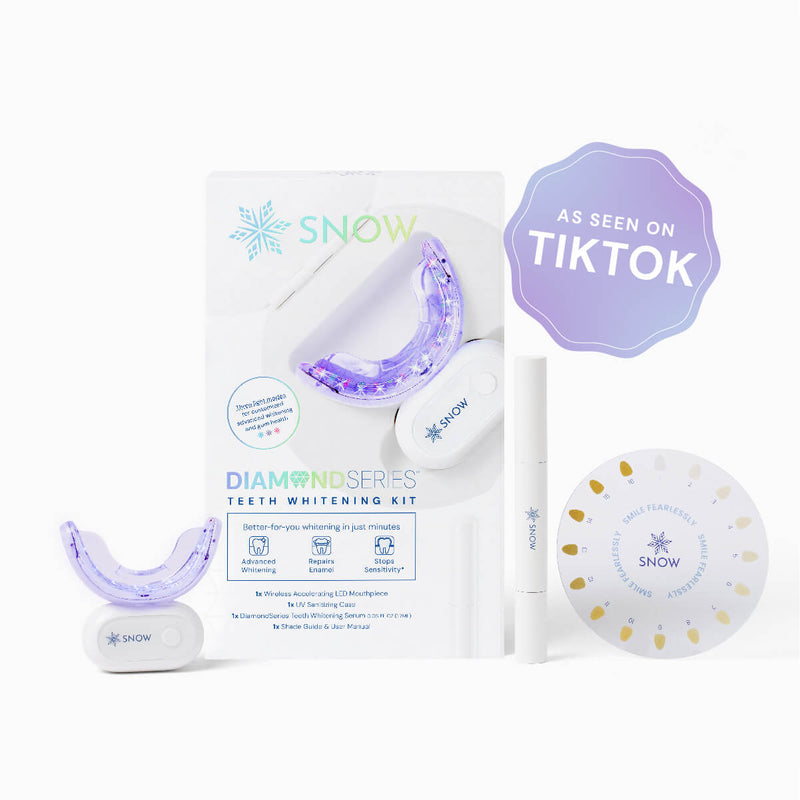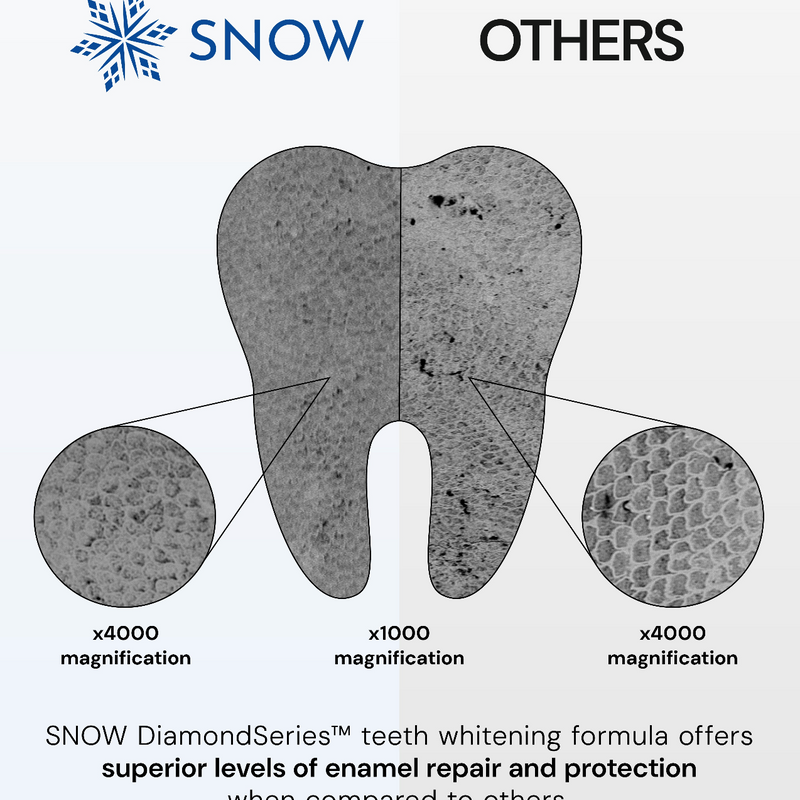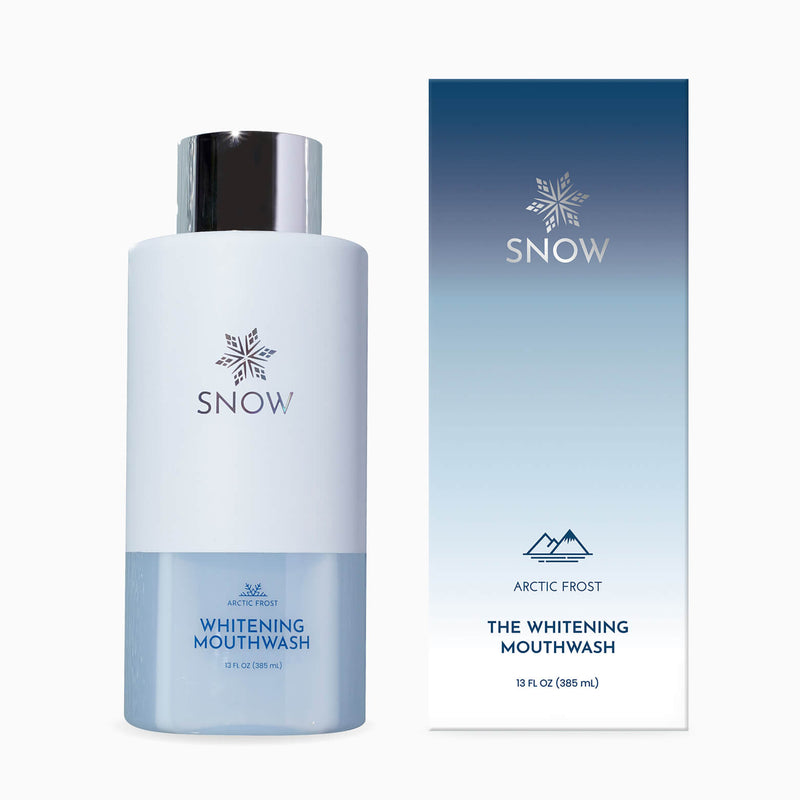"Should you leave toothpaste on your teeth?" is a common question among those looking to optimize their oral hygiene. The answer depends on several factors, including the type of toothpaste you use and your dental needs.
In this article, we'll discuss whether it's safe to leave toothpaste on overnight, explore the benefits and risks involved, and provide guidelines on how to use toothpaste properly. We'll also cover important tips for maintaining optimal dental hygiene.
Let's begin!
What this article covers:- Is It Safe to Leave Toothpaste on Overnight?
- Benefits of Leaving Toothpaste on Your Teeth
- Risks Involved in Leaving Toothpaste on Your Teeth
- Are You Supposed to Rinse After Brushing?
- How Long to Wait Before Using Mouthwash After Brushing?
- How to Use Toothpaste Properly: Guidelines
- Spit Out the Toothpaste When You're Done
- Tips for Optimal Dental Hygiene
Is It Safe to Leave Toothpaste on Overnight?
Leaving toothpaste on your teeth overnight is a practice that some individuals believe can enhance the toothpaste's benefits, particularly when it comes to fluoride's cavity-fighting properties.
However, it's important to weigh both the potential benefits and risks before making it a regular habit.
Benefits of Leaving Toothpaste on Your Teeth
Our research indicates that the primary benefit of leaving toothpaste on your teeth is the prolonged exposure to cavity-fighting minerals like hydroxyapatite.
Hydroxyapatite strengthens the enamel, making it more resistant to acid attacks from plaque bacteria and sugars in the mouth. By leaving a small amount of fluoride toothpaste on your teeth overnight, you may enhance its protective effects.
For those who prefer a fluoride-free option, SNOW's Nano-Hydroxyapatite teeth whitening toothpaste offers a gentle yet effective alternative.
It's enriched with natural ingredients like coconut oil and peppermint oil, providing a gentle whitening boost while promoting long-lasting fresh breath.
Is it safe to use whitening toothpaste everyday? Our whitening toothpaste is designed for daily use.
Risks Involved in Leaving Toothpaste on Your Teeth
While there are some potential benefits to leaving toothpaste on your teeth overnight, there are also risks to consider.
One of the primary concerns is enamel erosion. Toothpaste contains abrasives that are designed to clean the teeth.
When these abrasives remain on the enamel for extended periods, they can start to wear down the enamel, leading to increased sensitivity and a higher risk of cavities over time.
To avoid these risks while still achieving a brighter smile, consider SNOW's Magic teeth whitening strips. These use our Patented P3 Technology® to whiten teeth up to 7 shades without causing sensitivity.
Able to dissolve in under 15 minutes, they offer a quick and gentle whitening solution that's also vegan, cruelty-free, and free from harsh chemicals like alcohol, parabens, and sulfates.
Are You Supposed to Rinse After Brushing?
After brushing, it may seem natural to rinse your mouth to remove the leftover toothpaste. However, if you want to maximize the cavity-fighting power of fluoride toothpaste, it's advisable to skip the rinse.
By not rinsing immediately, you allow the active ingredients to work for longer, increasing its protective effects. If you prefer to rinse, consider waiting about 20 minutes or using a small amount of water.
For those who find it uncomfortable not to rinse, another option is SNOW's Arctic Frost teeth whitening mouthwash.
Its alcohol-free formulation supports the health of both natural and artificial teeth, making it an excellent complement to other SNOW whitening products.
How Long to Wait Before Using Mouthwash After Brushing?
Ideally, you should wait at least 20 to 30 minutes after brushing before using mouthwash. This waiting period allows the ingredient from the toothpaste to fully absorb into the enamel, offering maximum protection against cavities.
What's more, incorporating SNOW's teeth whitening powder into your routine can further protect your enamel, offering a convenient way to boost your oral care without the need to worry about fluoride risks.

How to Use Toothpaste Properly: Guidelines
Using toothpaste properly is essential for maintaining oral health, but it requires more than just brushing.
Below are key steps to ensure you're maximizing your toothpaste's effectiveness.
Apply A Small Amount To The Bush
When it comes to applying toothpaste, less is more. How much toothpaste should you use? For adults, a pea-sized amount of fluoride toothpaste is recommended.
Overusing toothpaste does not increase its effectiveness and can lead to unnecessary waste. For young children, it's crucial to supervise brushing to ensure they use the correct amount.
For those who use dental devices like aligners or retainers, SNOW's Magic teeth whitening foam is an excellent option. The key ingredients, hydrogen peroxide and nano-hydroxyapatite, work together to remove stains and remineralize teeth, making it suitable for sensitive teeth.
Brush For Two Minutes
We recommend brushing for at least two minutes, twice a day. During these two minutes, focus on all areas of your mouth: the outer surfaces, the inner surfaces, and the chewing surfaces of your teeth.
Using short, gentle strokes, hold your toothbrush at a 45-degree angle to the gums to remove plaque effectively without damaging your gums or enamel.
Based on our observations, brushing for less than two minutes may not adequately remove food particles and plaque, which can lead to cavities and gum disease. On the other hand, brushing too vigorously or for too long can cause enamel wear and gum recession.
Therefore, it's essential to find the right balance and stick to the recommended time.
Spit Out the Toothpaste When You're Done
After brushing, it's important to spit out the excess toothpaste but avoid rinsing your mouth immediately.
Spitting out the toothpaste removes the bulk of it, but leaving some residue on your teeth allows the active agents to work fully.

Tips for Optimal Dental Hygiene
Our findings show that key practices include brushing your teeth twice a day with a soft-bristled toothbrush and using natural toothpaste that fits your needs.
Flossing daily is also essential, as it helps remove food particles and plaque from between your teeth, reducing the risk of cavities and gum disease.
In addition to brushing and flossing, consider incorporating other healthy habits into your routine.
Regular dental checkups, replacing your toothbrush every three to four months, and avoiding tobacco are important steps.
When considering different types of toothpaste, it's important to choose one that aligns with your specific dental needs. Is fluoride free toothpaste good? While fluoride toothpaste is often recommended, fluoride-free options can be suitable for those who prefer natural alternatives.
Conclusion
The question of whether you should leave toothpaste on your teeth involves weighing the potential benefits against the risks.
We explored how leaving toothpaste on can enhance fluoride protection, but also highlighted concerns like enamel erosion and gum irritation. Proper use of toothpaste and knowing when to rinse can help you get the most out of your toothpaste while minimizing any adverse effects.
Maintaining optimal dental hygiene is about more than just brushing; it's about adopting habits that support your overall well-being.
With SNOW's safe and effective dental products, you can take the next step in achieving a healthy, bright smile. Visit us today to get the most out of your oral routine.
If you want to learn more, why not check out these articles below:
- Are You Supposed to Rinse Toothpaste
- Fluoride vs Fluoride Free Toothpaste
- How to Get White Teeth in 1 Day with Toothpaste
- Are Toothpaste Tablets Effective
- How Long Does a Tube of Toothpaste Last
- Does Toothpaste Kill Bacteria
- How Long Does It Take for Whitening Toothpaste to Work?
- How Does Sensitive Toothpaste Work?
- What Does Fluoride Do in Toothpaste?
- How Does Whitening Toothpaste Work?
- Does Fluoride Toothpaste Whiten Teeth
- Does Purple Toothpaste Work on Crowns?
- What Toothpaste Whitens Teeth?
- What Happens If You Use Too Much Toothpaste?
- What to Look for in Toothpaste

























